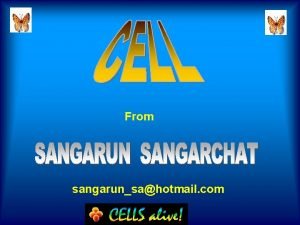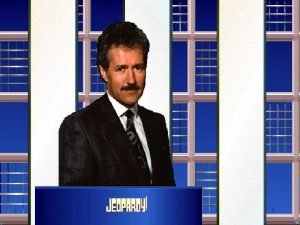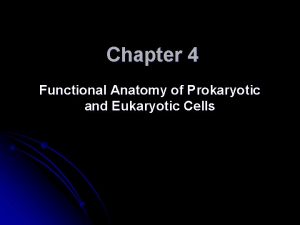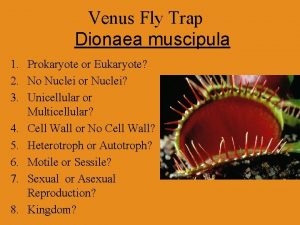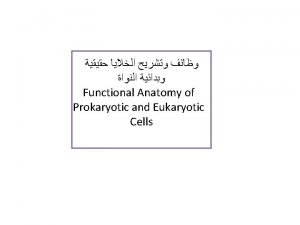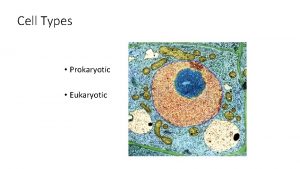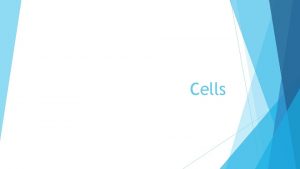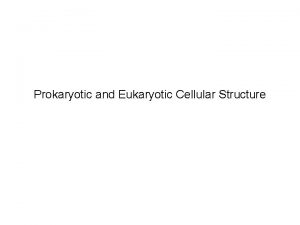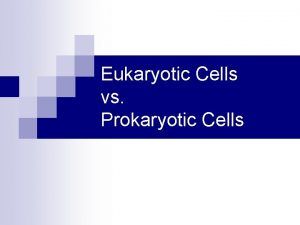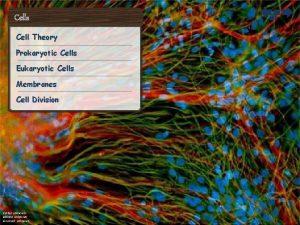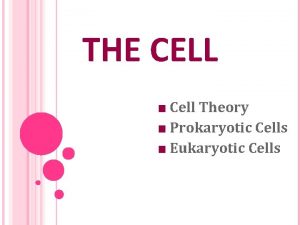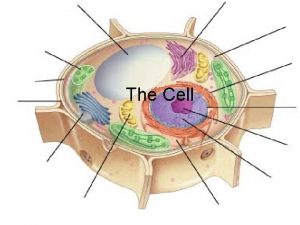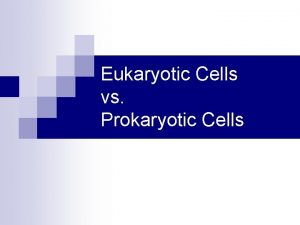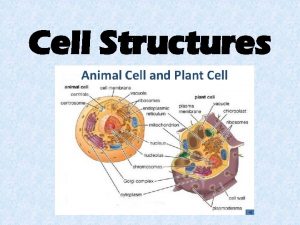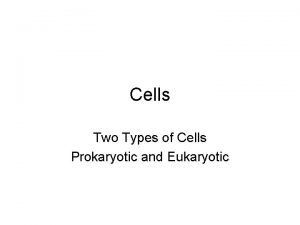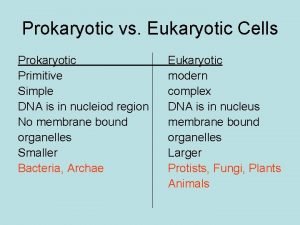Prokaryotic vs Eukaryotic Cells Major Cell Types Prokaryotic
























- Slides: 24

Prokaryotic vs. Eukaryotic Cells

Major Cell Types Prokaryotic – (Bacteria and archaea) cells lack a membrane-bounded nucleus or membrane-bounded organelles. Eukaryotic – cells have membrane-bounded a nucleus and membrane-bounded organelles.

Prokaryotes Archaea Bacteria Extreme halophiles Extreme thermophiles Methanogens Cyanobacteria (blue-green algae)

Prokaryotic Characteristics § § § Strong Cell Wall Rotating Flagella Simple Interior Organization

Cell Walls § With peptidoglycan – Bacteria § Without peptidoglycan – Archaea – Plants – Fungi – Most protists

Rotating Flagella § § § Protein fibers 0, 1 or more Rotary “motor” uses proton gradient for energy

Simple Internal Organization § § § No membrane-bound nucleus No membrane-bound organelles Plasma membrane carries out some “organelle” functions – DNA separation – Folds containing pigments for photosynthesis

Botulism!

Cholera!

Black Death!

Flesh Eating Bacteria!

E. coli!

All caused by. . . Bacteria!

Bacteria Size: 1 -1. 4 m wide, 2 -6 m long Shapes: spherical (coccus) rod-shaped (bacillus) spiral (spirillum)

Bacterial Morphology

Key Bacteria Features § § § § § Cell wall – peptidoglycan strengthens Capsule/slime layer (glycocalyx) Flagellum – motility appendage Plasma membrane Cytoplasm (cytosol) Ribosomes Nucleloid Plasmids Thylakoids Sex pili

Bacteria Most bacteria living today “true bacteria. ” C Strong cell walls containing peptidoglycan (protein cross-linked carbohydrate) C Simple gene architecture C Photosynthetic - cyanobacteria (blue-green algae) CFolded plasma membrane CFolds contain photosynthetic pigments

Representative Prokaryotic (Bacterial) Cell

Archaea From the Greek for “ancient ones. ” Anaerobic (“without air”) Similarities to bacteria DNA Lipid cell membrane Exterior cell wall Metabolism based on ATP

Archaea Differences from bacteria irregular Also lobed, plate-shaped or simply eukaryotes DNA & RNA sequences closer to Inhabit extreme environments Lack peptidoglycan in cell walls Unique lipids in cell membrane processes Differences in basic biochemical

Eukaryotic Cells Far more complex! Bio. Flix: Tour Of An Animal Cell Bio. Flix: Tour Of A Plant Cell

Key Eukaryotic Cell Features § Membrane-bound nucleus – chromosomes § Membrane-bound organelles – Compartmentalization § Cytoskeleton

Review § Identify the major characteristics distinguish a cell as being prokaryotic. that

Review § Define the following key terms related to prokaryotic cells. cytosol nucleoid region capsule slime layer cell wall capsule flagellum plasma membrane cytoplasm (cytosol) ribosomes nucleloid plasmids thylakoids glycocalyx
 Prokaryote vs eukaryote
Prokaryote vs eukaryote Prokaryotic cell
Prokaryotic cell What animals have prokaryotic cells
What animals have prokaryotic cells Are red blood cells prokaryotic
Are red blood cells prokaryotic Site:slidetodoc.com
Site:slidetodoc.com Linear chromosomes in eukaryotes
Linear chromosomes in eukaryotes Life
Life Similarities between prokaryotic and eukaryotic cells
Similarities between prokaryotic and eukaryotic cells Diff between prokaryotes and eukaryotes
Diff between prokaryotes and eukaryotes Similarity between prokaryotic and eukaryotic cells
Similarity between prokaryotic and eukaryotic cells Comparison of prokaryotic and eukaryotic cells
Comparison of prokaryotic and eukaryotic cells Prokaryotic and eukaryotic cells chart
Prokaryotic and eukaryotic cells chart Difference between prokaryotic and eukaryotic cell
Difference between prokaryotic and eukaryotic cell How water moves
How water moves Difference between prokaryotic and eukaryotic cells
Difference between prokaryotic and eukaryotic cells Functional anatomy of prokaryotic and eukaryotic cells
Functional anatomy of prokaryotic and eukaryotic cells Are cell walls prokaryotic or eukaryotic
Are cell walls prokaryotic or eukaryotic Are cell walls prokaryotic or eukaryotic
Are cell walls prokaryotic or eukaryotic Do seedless plants have cell walls made of cellulose
Do seedless plants have cell walls made of cellulose Cytoskeleton prokaryotic or eukaryotic
Cytoskeleton prokaryotic or eukaryotic Eukaryotic cell animal cell
Eukaryotic cell animal cell Venus fly trap prokaryotic or eukaryotic
Venus fly trap prokaryotic or eukaryotic Eukaryotic vs prokaryotic transcription
Eukaryotic vs prokaryotic transcription Monera procariota
Monera procariota Is protozoa prokaryotic or eukaryotic
Is protozoa prokaryotic or eukaryotic










